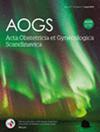Uterine volume assay after gonadotoxic therapies in childhood, adolescence, and young adulthood: A systematic review and Bayesian network meta-analysis
Abstract
Introduction
Uterine damage after pelvic radiotherapy or total-body irradiation is well described, with decreased uterine volume and high obstetrical morbidity. Some recent studies have reported a smaller uterus in child, adolescent, and young adult cancer survivors treated with chemotherapy only. This systematic review investigated the long-term effects of gonadotoxic therapy on uterine volume during childhood, adolescence, and young adulthood.
Material and Methods
Data sources were Medline, Embase, and the Cochrane Library databases from 1990 to April 2023 searched using the following search terms: cancer survivors, bone marrow transplantation, chemotherapy, radiotherapy, and uterine volume. Study selection and synthesis: Only comparative studies reporting uterine volume in adult women who had received chemotherapy and/or radiotherapy during childhood, adolescence, or young adulthood (<25 years) were included. Two independent reviewers performed study selection, bias assessment using the ROBINS-I tool, and data extraction. The main outcome was uterine volume (mL). A Bayesian network meta-analysis with meta-regression for parity and serious risk of bias was performed using a random-effects model.
Results
After reviewing 2847 abstracts, four studies were selected for the meta-analysis. Uterine volume data were available for 225 women after chemotherapy, 153 women after chemoradiotherapy, and 257 control women without cancer. Uterine volume was significantly lower in the chemoradiotherapy group than in the control group (−29.2 mL [−49.1, −12.5]). Uterine volume was significantly decreased in the chemoradiotherapy group compared to the chemotherapy group (−20.9 mL [−39.1, −0.3]). The difference in the mean uterine volume between the control and chemotherapy groups was 8.2 mL [−11.8, 34.2] and was not significant.
Conclusions
Our meta-analysis confirms the well-known data on chemoradiotherapy-induced uterine damage. Although some studies have suggested the potential impact of high doses of chemotherapy on uterine volume, this meta-analysis did not find any significant decrease in uterine volume after chemotherapy. This result could help counsel age-reproductive women and physicians who perform assisted reproductive technologies in long-term CAYA Cancer survivors.




 求助内容:
求助内容: 应助结果提醒方式:
应助结果提醒方式:


